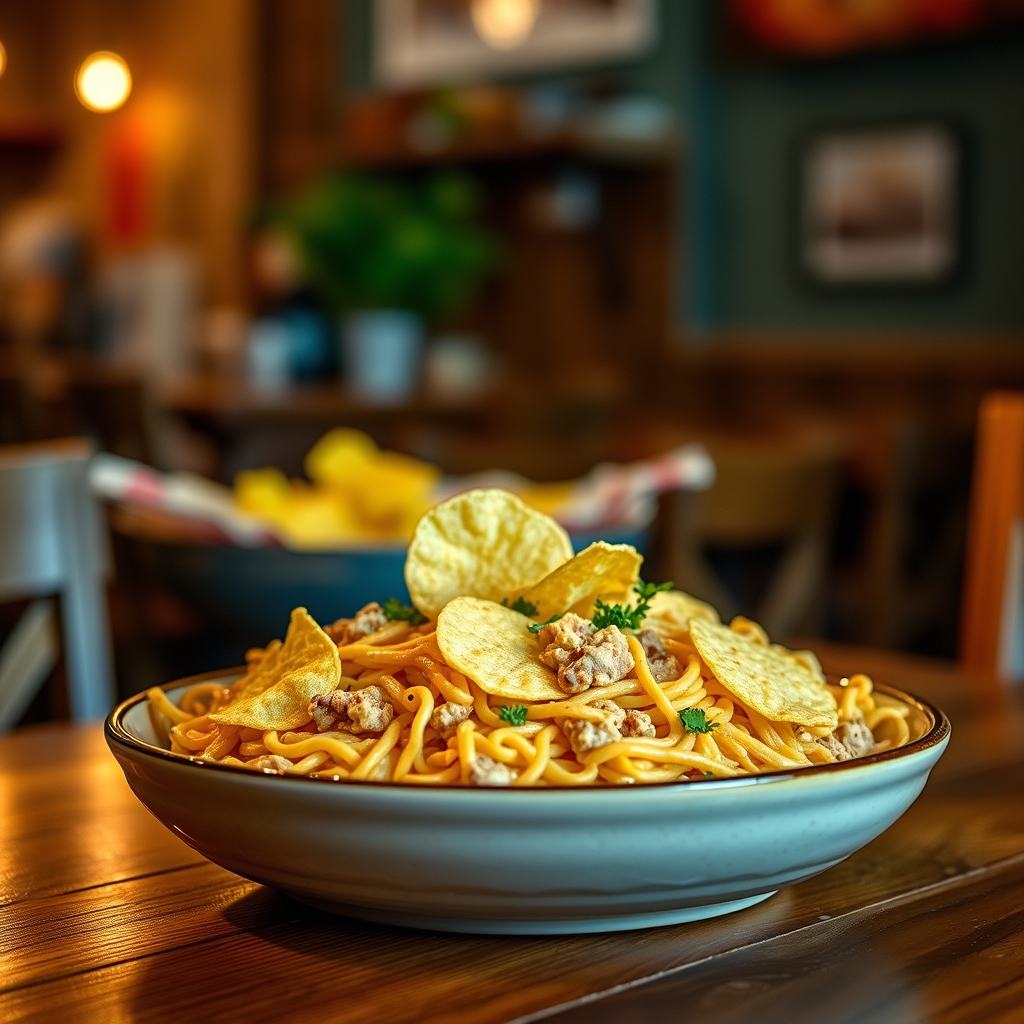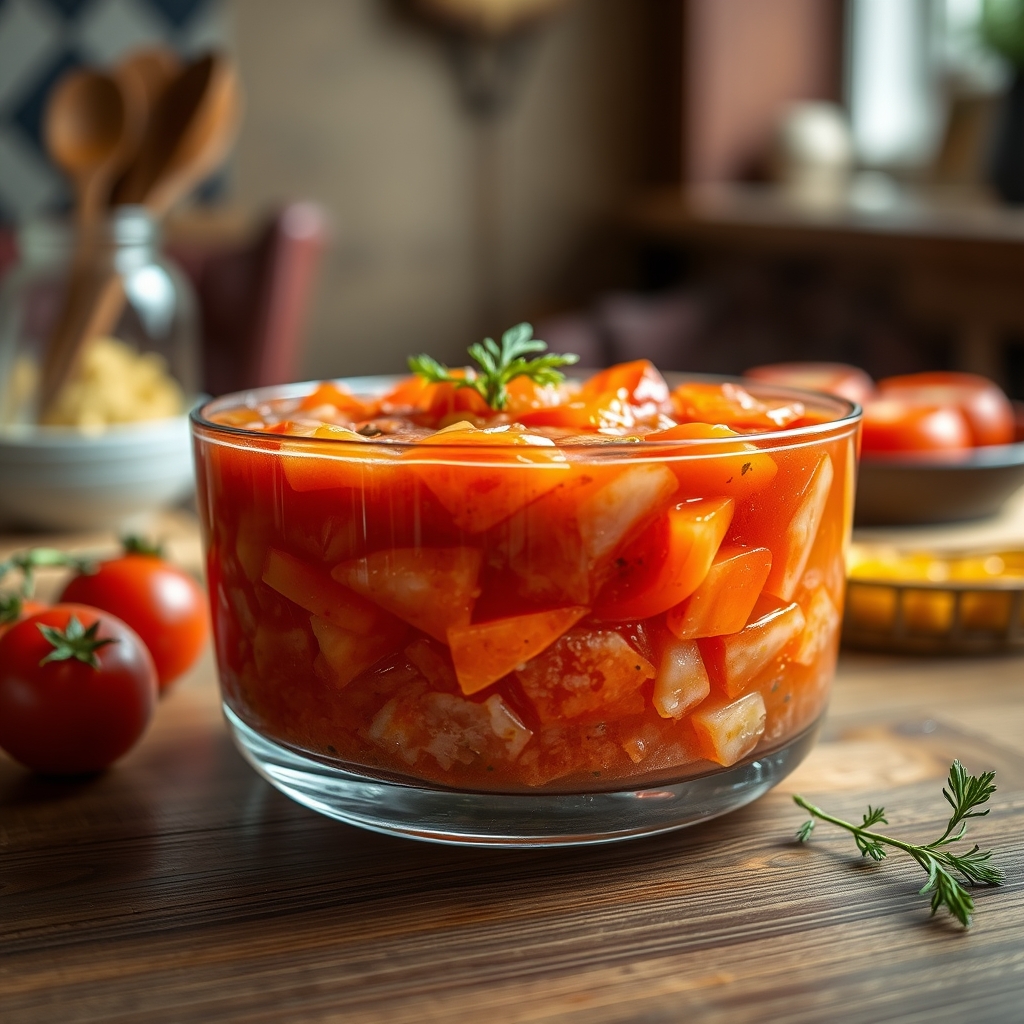Classic 7-Layer Gelatin Salad
There’s something undeniably nostalgic about a Classic 7-Layer Gelatin Salad. This retro dish, often found at potlucks and holiday gatherings, is a vibrant, jiggly masterpiece that brings both color and flavor to the table. Whether you remember it from childhood or are discovering it for the first time, this recipe is a delightful blend of sweet, tangy, and creamy layers that come together in perfect harmony. Let’s dive into why this vintage favorite deserves a spot in your recipe collection.
Why You’ll Love This Recipe
First, the visual appeal of this dish is unmatched. The rainbow-like layers make it a showstopper at any gathering, guaranteed to draw compliments from guests. Second, the texture contrast between the firm gelatin and the creamy layers creates a satisfying bite that keeps you coming back for more. Third, it’s incredibly versatile—you can customize the flavors and colors to match any occasion. Fourth, it’s a make-ahead dish, meaning less stress on the day of your event. And finally, it’s a crowd-pleaser, loved by both kids and adults alike.
Ingredients Breakdown
Understanding the ingredients is key to mastering this Classic 7-Layer Gelatin Salad. Here’s what you’ll need and why each component matters:
- Gelatin (multiple flavors) – The foundation of the dish, gelatin provides structure and vibrant color. Using different flavors like lime, cherry, and lemon adds variety.
- Cottage cheese or sour cream – These creamy layers balance the sweetness of the gelatin and add a rich, tangy contrast.
- Crushed pineapple (drained) – Adds natural sweetness and a tropical touch while keeping the texture light.
- Whipped topping (like Cool Whip) – Introduces a fluffy, airy layer that lightens the overall dish.
- Chopped nuts (optional) – For a bit of crunch and nutty depth, walnuts or pecans work beautifully.
- Mini marshmallows (optional) – A playful addition that adds chewiness and extra sweetness.
How to Make Classic 7-Layer Gelatin Salad
Follow these steps to create a flawless 7-Layer Gelatin Salad:
- Prepare the first gelatin layer – Dissolve one package of gelatin in boiling water, then stir in cold water. Pour into a clear glass dish and refrigerate until firm (about 1 hour).
- Add the creamy layer – Mix cottage cheese or sour cream with a bit of sugar and vanilla. Spread gently over the set gelatin and return to the fridge for 30 minutes.
- Repeat with the next gelatin layer – Choose a contrasting color and flavor, prepare as before, and pour over the creamy layer. Chill again.
- Layer the fruit and nuts – Sprinkle crushed pineapple and chopped nuts (if using) over the set gelatin.
- Finish with whipped topping – Spread a fluffy layer of whipped topping as the final touch.
- Chill thoroughly – Let the salad set for at least 4 hours, preferably overnight, for clean slices.
For best results, use a clear trifle dish or glass pan to showcase the beautiful layers.
Pro Tips for the Best Results
- To prevent layers from bleeding, ensure each gelatin layer is fully set before adding the next.
- For a smoother creamy layer, blend the cottage cheese until creamy before mixing.
- If using fresh fruit, pat it dry to avoid excess moisture seeping into the gelatin.
- For a boozy twist, replace some of the cold water in the gelatin with flavored liqueur.
Variations and Substitutions
This recipe is highly adaptable. Here are some creative twists:
- Dietary swaps – Use sugar-free gelatin and low-fat dairy for a lighter version.
- Flavor variations – Try berry medleys, tropical flavors, or even a citrus blend.
- Vegan option – Substitute agar-agar for gelatin and use coconut yogurt in place of dairy.
- Texture additions – Layer in shredded coconut, mandarin oranges, or even berries.
What to Serve With It
This salad pairs wonderfully with a variety of dishes. Consider serving it alongside:
- Classic baked ham or roasted turkey for a holiday spread.
- Fresh green salads with a light vinaigrette to balance the sweetness.
- Buttery dinner rolls or cornbread for a comforting meal.
- Sparkling lemonade or iced tea for a refreshing beverage pairing.
How to Store and Reheat
Since this is a chilled dish, storage is simple:
- Refrigeration – Cover tightly with plastic wrap and store for up to 5 days.
- Freezing – Not recommended, as gelatin can become watery when thawed.
- Serving leftovers – Keep refrigerated until ready to serve; no reheating needed.
Frequently Asked Questions (FAQs)
Can I use fresh fruit instead of canned?
Yes, but ensure the fruit is well-drained and patted dry to prevent excess moisture.
How do I prevent the layers from mixing?
Make sure each layer is fully set before adding the next, and pour gently over the back of a spoon.
Can I make this ahead of time?
Absolutely! This dish actually tastes better when made a day in advance.
What’s the best dish to use for presentation?
A clear glass trifle bowl or rectangular baking dish showcases the layers beautifully.
Is there a way to make this less sweet?
Opt for less sugar in the creamy layers or use tart fruit like cranberries to balance the sweetness.
Final Thoughts
The Classic 7-Layer Gelatin Salad is more than just a dish—it’s a celebration of color, texture, and nostalgia. Whether you’re bringing it to a summer picnic or a festive holiday table, its playful layers and delightful flavors are sure to impress. Don’t be afraid to make it your own with creative variations. After all, the best recipes are those that bring joy to both the maker and the eater. Happy layering!
Print
Classic 7-Layer Gelatin Salad
Description
A retro-inspired layered gelatin salad with vibrant colors and sweet-tangy flavors. Perfect for potlucks, holidays, or as a nostalgic dessert.
Ingredients
For the Crust:
- For Gelatin Layers:
- 1 (3 oz) package lime gelatin
- 1 (3 oz) package lemon gelatin
- 1 (3 oz) package orange gelatin
- 1 (3 oz) package strawberry gelatin
- 4 cups boiling water (divided)
- 4 cups cold water (divided)
- For Cream Layer:
- 1 (3 oz) package unflavored gelatin
- 1/2 cup cold water
- 1 (14 oz) can sweetened condensed milk
- 1 (8 oz) package cream cheese, softened
- 1 cup sour cream
- 1 tsp vanilla extract
- For Topping:
- 1 cup whipped cream
- 1/4 cup chopped pecans
Instructions
1. Prepare the Crust:
- Day 1 – Prepare Gelatin Layers:
- 1. Dissolve each flavored gelatin separately: Mix one package with 1 cup boiling water until fully dissolved, then add 1 cup cold water.
- 2. Pour lime gelatin into a 9×13″ glass dish. Refrigerate 45 minutes until set but not firm.
- 3. Repeat with lemon, orange, and strawberry layers, chilling each 45 minutes before adding next.
- Day 2 – Make Cream Layer:
- 1. Sprinkle unflavored gelatin over 1/2 cup cold water. Let bloom 5 minutes.
- 2. Microwave 30 seconds until dissolved. Whisk into condensed milk.
- 3. Beat cream cheese until smooth. Add sour cream, vanilla, and gelatin mixture.
- 4. Pour over set gelatin layers. Chill 2 hours.
- Final Assembly:
- 1. Spread whipped cream over top. Sprinkle with pecans.
- 2. Chill 4 hours or overnight before serving.
Notes
• Use clear glass dish to showcase layers • Substitute sugar-free gelatin if needed • For cleaner cuts, dip knife in hot water between slices • Make 2 days ahead for best results




